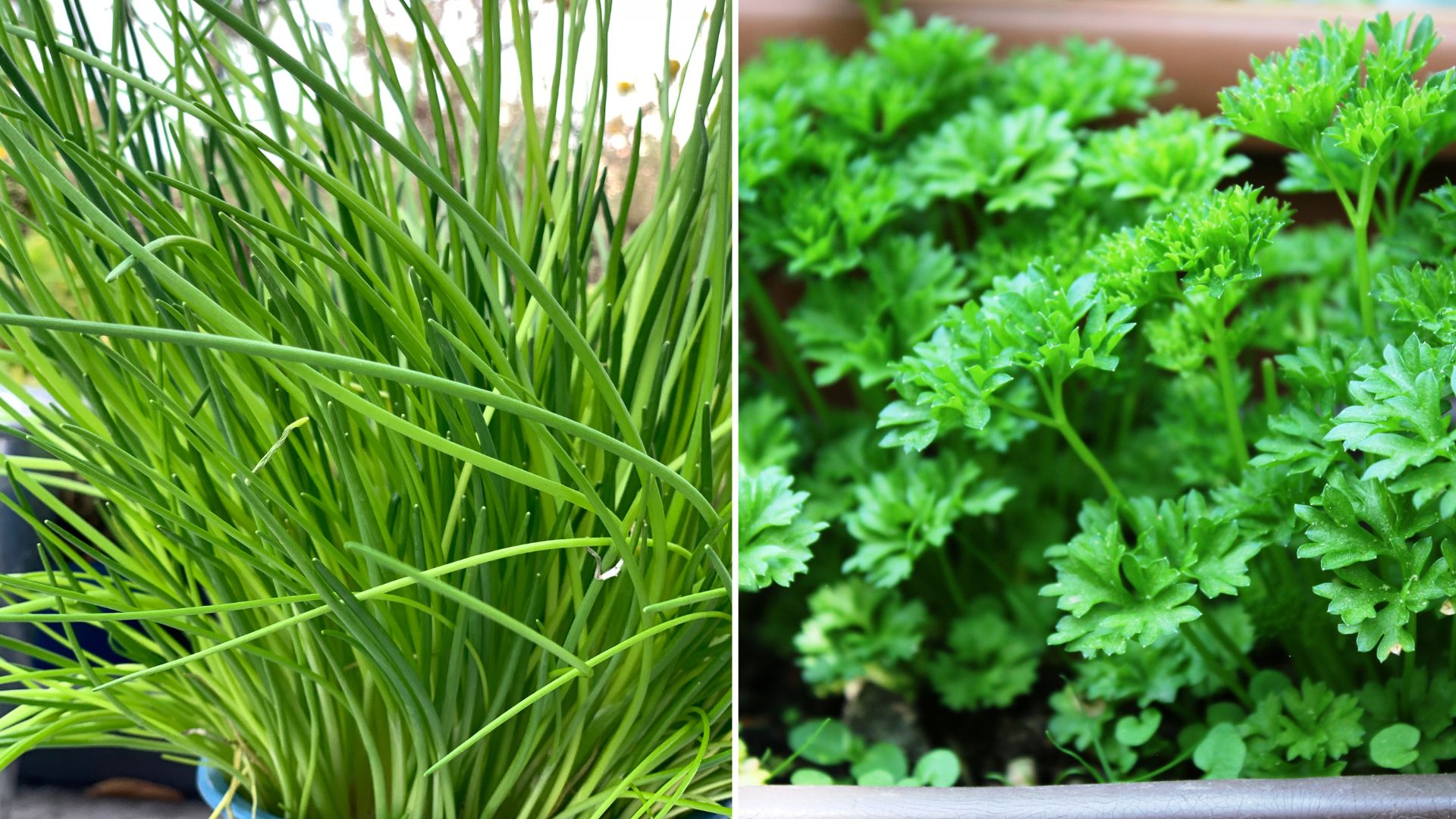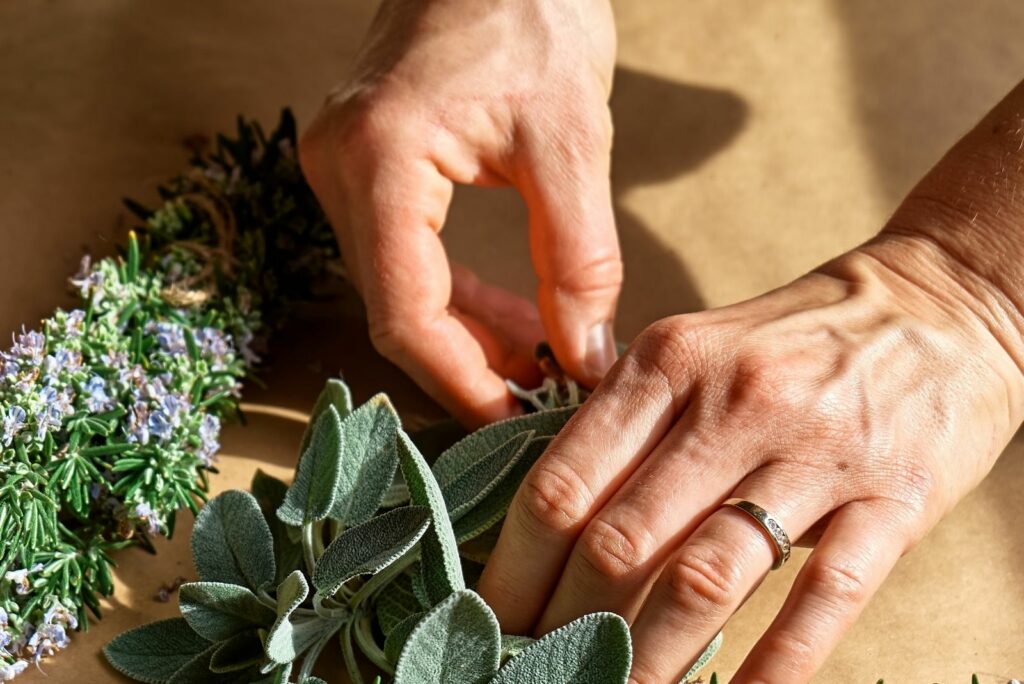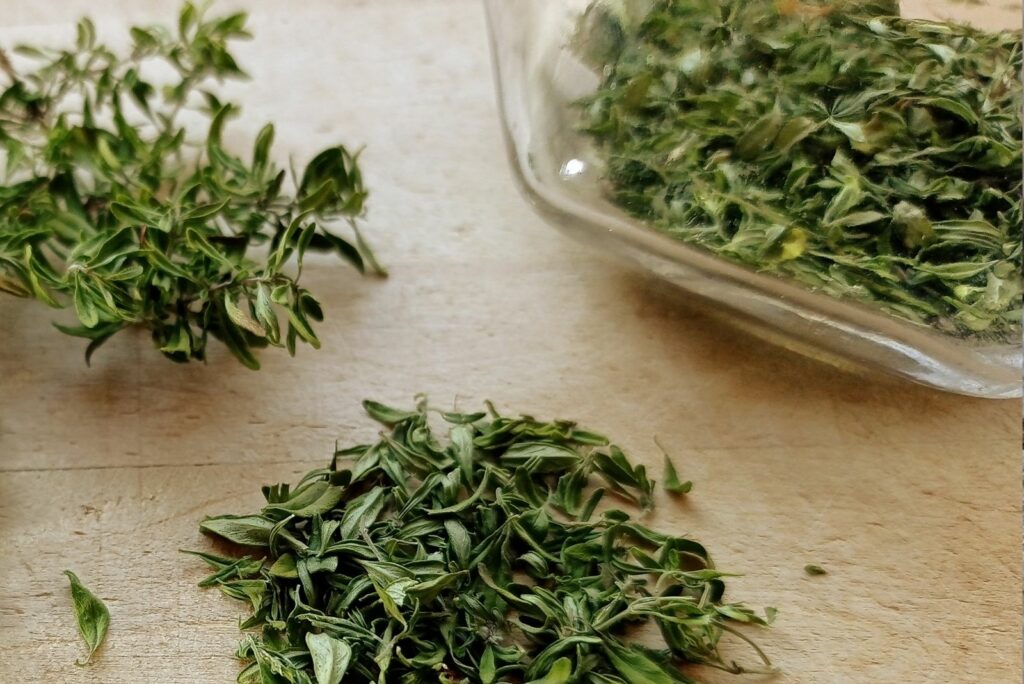I’ve rarely seen spring and summer gardens without at least one herb in them, be it mint, basil, oregano, or rosemary.
But growing them in winter? Is that even possible?
Yes, it is! There are numerous cold-hardy herbs that can tolerate harsh winters if you prepare them correctly and choose a variety that can grow in your area.
Here are some of the most common ones and some tips that will help you protect them from extreme weather.
Let’s get started!
1. Chives
This perennial is hardy in USDA zones 3-10, so it can tolerate some extreme conditions. But even if it can survive harsh winters, it doesn’t mean it prefers them.
Grow this herb in temperatures between 40 and 80°F and you’ll get a bountiful harvest.
There are two things you can do with chives during winter. You can leave them outdoors for the first frost and then move them indoors, where the herb will continue producing.
Or you can leave them outdoors in harsh conditions where the plant will go dormant, die back, and spring back up when the weather warms up.
Plant chives in a location that gets plenty of sunlight, ensure the soil is well-draining and rich in organic matter, and space the plants 6-12 inches apart.
And, finally, chives have numerous benefits for other plants, too, so skim through the chart for companion planting herbs and grow it alongside other veggies to improve their taste, repel pests, etc.
2. Parsley
Parsley is one of those herbs that you can grow all year round in most climates because it is cold-hardy in zones 4-11. However, some gardeners that live in USDA zone 2 have reported successfully growing this herb.
But even though it can tolerate cold conditions, it still thrives in temperatures between 50-70°F. And once it gets established, it can survive temperatures as low as 20°F.
You can grow this herb in spring or fall. Start the seeds sometime between mid-February and mid-March, and move the plant outdoors in May.
For fall plantings, plant the seeds outdoors 8-10 weeks before the first fall frost. Once the temperatures start going down, add a layer of organic mulch such as leaves, straw, pine needles, etc.
Additionally, it is important to know how to harvest parsley without killing it if you want to overwinter it. Never take all the greenery and you should be good to go.
3. Rosemary
Just like parsley, chives, and even oregano, you can grow rosemary all year long and overwinter it outdoors.
It is hardy in zones 7-10, but there have been reports of it successfully surviving winter in zone 6.
However, it all depends on the variety you have. Most varieties can survive conditions as low as 15°F, but it’s best to keep this herb at much higher temperatures. In winter, rosemary prefers its daytime conditions between 60-65°F and nighttime between 40-50°F. (1)
Of course, there are some tips that can help you care for your rosemary in winter, such as mulching it with wood chips, using row covers to protect it from frost, etc. Just make sure to remove the mulch in spring when the plant begins to grow.
When planting this herb, place it in a location where it can get full sun and ensure the soil is well-drained and mildly acidic. And to keep it safe from harsh and freezing winds, you can plant it near your home, shed, wall, or fence.
4. Sage
There are many plants from the mint family (including mint) that are cold-tolerant. Sage is one of them.
This herb thrives in zones 4-10 and can tolerate extreme cold. However, it prefers temperatures between 60-70°F, but hotter or colder conditions won’t do it harm.
You should mulch it before the ground freezes if you want to keep it outdoors, or you can take it indoors if you’re growing it in containers so you can harvest its aromatic foliage.
If you’re just considering planting it, make sure to do it at least a couple of weeks before the first frost, although, the sooner you do so, the better.
Mulch it with some organic material such as compost, and cover it with a frost cloth to reduce freeze damage.
Finally, consider growing some sage companion plants because this herb can repel pests and reduce your need for pesticides.
5. Thyme
Thyme is one of the hardier herbs you can grow in your garden, as it can tolerate conditions in zones 4-10. There are many thyme varieties and most of them thrive in zone 5 and above.
It prefers temperatures between 60-80°F, but can withstand conditions as low as -30°F if you grow the right variety for your region.
However, this herb will die back during extreme cold, but a good layer of mulch will help insulate the soil and protect the plant’s roots. That way, it will be able to grow back come spring.
Just make sure to plant this herb in a spot that gets plenty of sunlight and has well-draining soil, just don’t forget to mulch them in fall when the ground cools down from summer temperatures, but before it freezes.
Preparing Your Herbs For Winter
One of the best things you can do for your winter herbs is mulching them. It will help regulate the soil temperature and keep the roots of these plants safe when the temperatures plunge.
But there’s something even more ominous about harsh winters – frost heave. This involves constant freezing and thawing of the soil, which pushes and turns the plants and their roots. It can expose the plant crown to winds and cold, stunting its growth, damaging it, and even killing it. (2)
Luckily, there is a way to avoid this. Plant your herbs early in the fall, mulch them, and make sure their soil is well-draining.
But even with all these precautions, frost heave can still hurt your plants. That’s why it’s important to keep a close eye on your plants and cover the crowns with growing medium and mulch.
Final Thoughts
These five cold-hardy herbs will give you a fresh aromatic supply even during winter. You can keep them outdoors with a little bit of mulch and freeze protection or take them indoors where you can be sure they’ll thrive.
Of course, their vegetative growth may die back in extreme winters, but they should spring right back up once the weather warms up if you’ve protected their roots properly.
References:
1. Voyle, G. (2011). Rosemary: The Herb with Winter Problems. MSU Extension.
2. Frost Heaving (n.d.) Missouri Botanical Garden.








